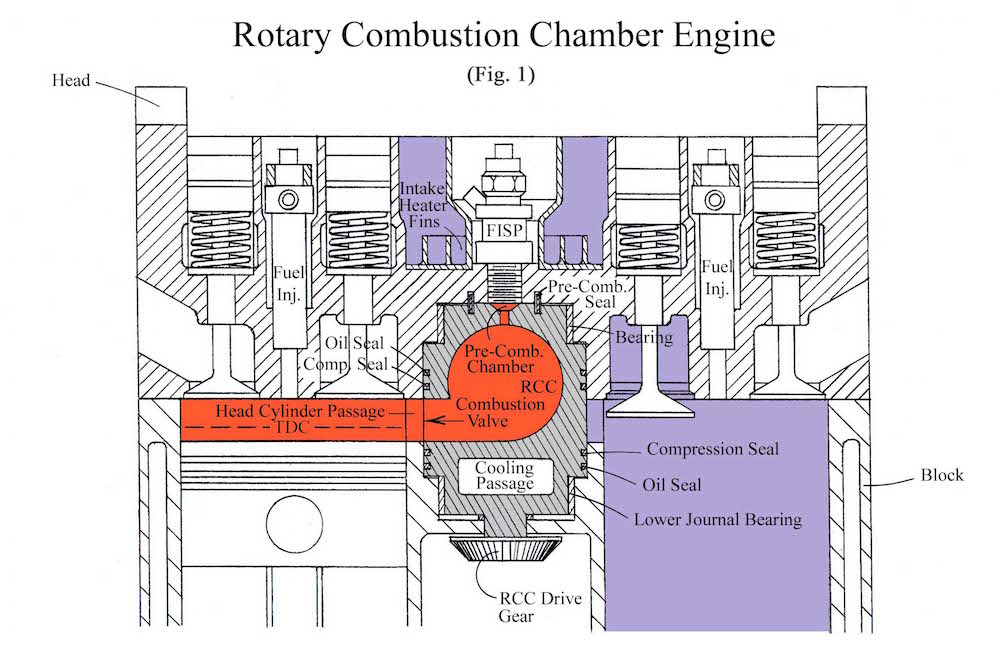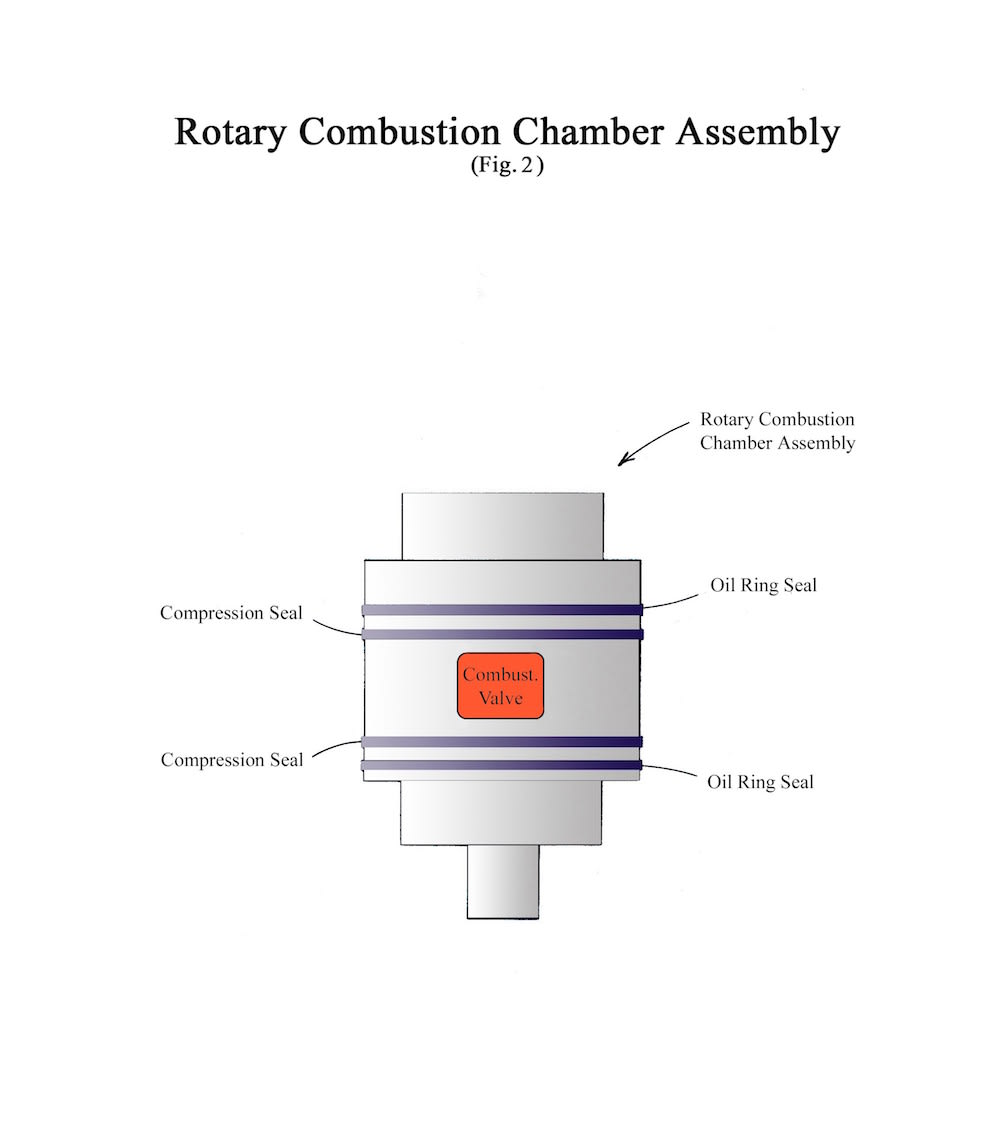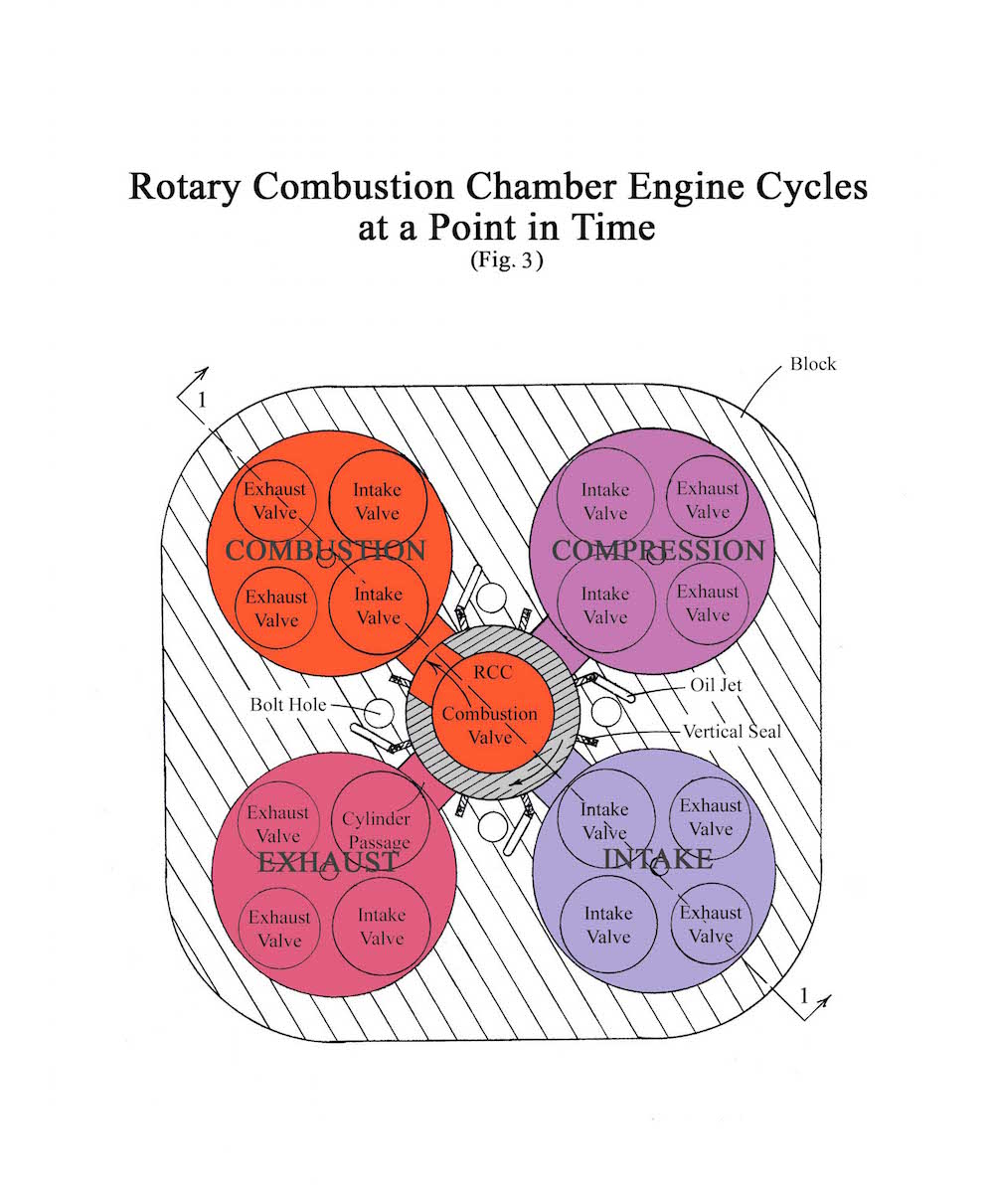The disclosed engine addresses the problem of climate change by increasing engine efficiency and decreasing emissions. A conventional four stroke poppet valve engine is modified to include a novel rotary combustion chamber (RCC) serving all cylinders in the preferred four cylinder format. The RCC contains an opening identified as the combustion valve which transfers the expanding combustion charge to each cylinder in succession as it rotates past each cylinder opening. Three major benefits produced by this engine are the limited heat range encountered in the RCC reducing heat transfer losses; better adaptability to hydrogen combustion; and the ability to incorporate many energy efficient and emission reducing features.
In operation, a heat exchanger heats the intake air from residual exhaust heat. Next, a supercharger (not shown) forces air into the intake manifold. The charge is further heated by fins located in the intake passage before it enters the cylinder. A small amount of preheated fuel is injected into the cylinder during compression before the combustion valve opens late in the compression cycle. Compression pressure causes half of the very lean mixture to quickly enter the RCC while additional fuel is injected into it to produce almost immediate and thorough mixing of the charge. The residual rich mixture in the pre-combustion chamber caused by restricted access to the incoming compression charge is ignited by the combination spark plug fuel injector (FISP) and the resulting combustion jet ignites the RCC charge. The pressure rise created by the RCC ignition (combustion pressure ignition) or jet ignites the cylinder charge providing power to the piston. After most of the charge has been transferred to the cylinder, the combustion valve closes while rotating to the next cylinder to repeat the process. Finally, heat from the exhaust charge is added to the intake air via a heat exchanger as the exhaust exits through the head.
Increased engine efficiency is produced by multistage and low temperature combustion (LTC), charge stratification, jet ignition, combustion pressure ignition, ceramic coatings, variable compression enabled by a z-crankshaft, increased intake charge pressures, high EGR levels, dilute fuel mixtures and reductions in heat transfer, combustion process and pumping losses. Reduced emissions are made possible by LTC over greater operational ranges than conventional engines and re-combustion of part of the charge. Initially using conventional fuels or natural gas, the future use of hydrogen using an on-board reformer or hydrogen fuel could produce near zero emissions.
Additional cylinder variations are possible enabling this engine to replace most current internal combustion engines in the transportation and stationary use sectors. Based on present piston and rotary engine technology, manufacture of this engine would be similar to current engine manufacturing processes. Adding the RCC assembly and components to a conventional engine would likely increase production costs slightly, but this added premium would be justified by the marked increase in efficiency and reductions in emissions.
This disclosure is protected by US patent 9,003,765 B1.
Like this entry?
-
About the Entrant
- Name:Barry Muth
- Type of entry:individual
- Patent status:patented








